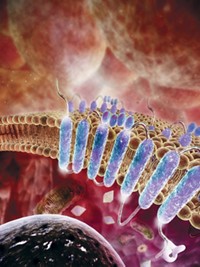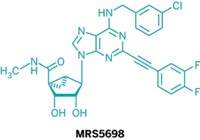Advertisement
Grab your lab coat. Let's get started
Welcome!
Welcome!
Create an account below to get 6 C&EN articles per month, receive newsletters and more - all free.
It seems this is your first time logging in online. Please enter the following information to continue.
As an ACS member you automatically get access to this site. All we need is few more details to create your reading experience.
Not you? Sign in with a different account.
Not you? Sign in with a different account.
ERROR 1
ERROR 1
ERROR 2
ERROR 2
ERROR 2
ERROR 2
ERROR 2
Password and Confirm password must match.
If you have an ACS member number, please enter it here so we can link this account to your membership. (optional)
ERROR 2
ACS values your privacy. By submitting your information, you are gaining access to C&EN and subscribing to our weekly newsletter. We use the information you provide to make your reading experience better, and we will never sell your data to third party members.
Drug Discovery
Hunting for new anesthetics
N-aryl pyrrole has anesthetic effects in frogs and rats without the side effects found with currently available drugs
by Celia Arnaud
July 15, 2019

Existing anesthetics in clinical use have side effects that can make the drugs dangerous for vulnerable populations, such as the very young and the very old. These side effects include drops in blood pressure and inhibition of steroid biosynthesis. Anesthesiologists know how to mitigate those side effects, but drugs without them would be safer and easier to use.
A team led by Edward J. Bertaccini of Stanford University School of Medicine and the Palo Alto VA Health Care System has identified a class of compounds that could lead to a new family of anesthetics without the side effects (Proc. Natl. Acad. Sci. U.S.A. 2019, DOI: 10.1073/pnas.1822076116).
Through a series of modeling studies, one of which involved finding compounds that could bind strongly to the γ-aminobutyric acid (GABA) type A receptor, the researchers identified N-aryl pyrroles as a class of molecules to pursue. They searched compound databases for molecules with that core and turned up 11 commercially available diphenyl N-aryl pyrroles, none of which had been considered as anesthetics. The compounds exhibited anesthetic effects in frogs and rats. The tests in rats showed that the most potent compound doesn’t cause drops in blood pressure, even at doses of about five times the amount needed to knock out the rats.
Bertaccini is collaborating with Stanford’s SPARK drug development program to do preliminary toxicology and formulation studies on the lead compound.
Stuart A. Forman, an anesthesiologist at Massachusetts General Hospital, points out that there’s a history of potential anesthetics failing to reach the market and being unable to compete with propofol, the most popular anesthetic, if they do.
“Anesthesia providers have managed to adapt their use of propofol and other available induction agents to ameliorate dangers to vulnerable patients. Until an alternative anesthetic drug with superior overall clinical performance is developed, this state of affairs will persist,” Forman says. “Only time and more scientific work will tell if the diphenyl-pyrroles can meet this challenge.”





Join the conversation
Contact the reporter
Submit a Letter to the Editor for publication
Engage with us on Twitter